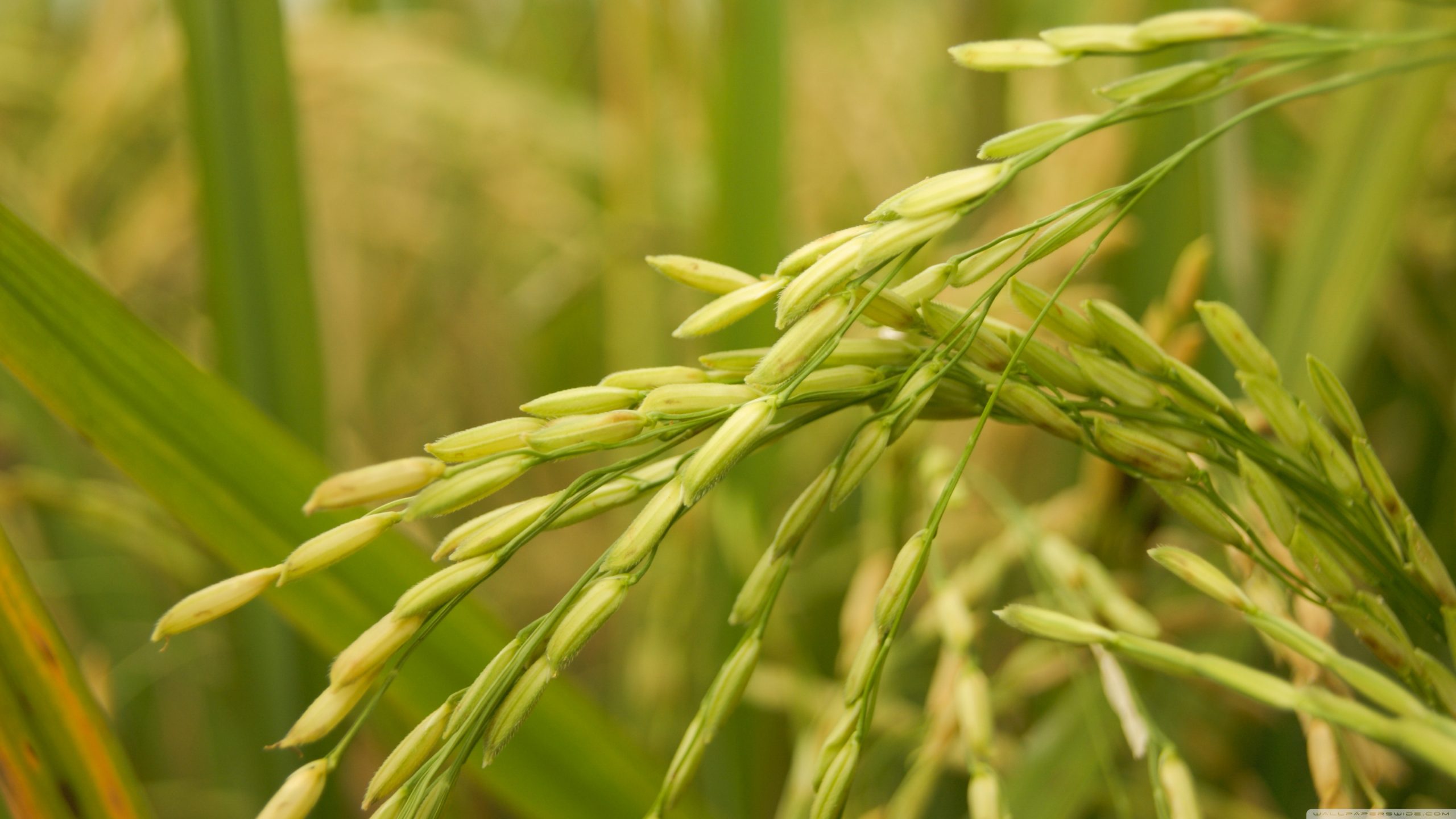Rice is the main staple food in Asia, where about 90% of the world’s rice is produced and consumed. China is the world’s biggest producer, growing one-third of Asia’s total on 29 million ha (Table 1.1). India produces nearly a quarter on 43 million ha. Other top rice-producing countries in Asia are mentioned in table 1.1 too. Average yields in these countries range from 2.6 to 6.5 t/ha.
Rice plant is an annual warm-season grass (monocot plant) with round culms, flat leaves and terminal panicles.
Rice is normally grown as an annual plant, although in tropical areas it can survive as a perennial and can produce a ratoon crop up to 20 years. The rice plant can grow to 1–1.8 m tall, occasionally more, depending on the variety and soil fertility. The grass has long, slender leaves 50–100 cm long and 2–2.5 cm broad. The small wind-pollinated flowers are produced in a branched arching to pendulous inflorescence 30–50 cm long. The edible seed is a grain (caryopsis) 5–12 mm long and 2–3 mm thick.
The single seed is fused with the wall, which is the pericarp of the ripened ovary forming the grain. Each rice panicle (which is a determinate inflorescence on the terminal shoot), when ripened, contains on average 80-120 grains, depending on varietal characteristics, environmental conditions and the level of crop management. The floral organs are modified shoots consisting of a panicle, on which are arranged a number of spikelets. Each spikelet bears a floret which, when fertilized, develops into a grain.
Soil type: A rice paddy needs to hold water well. Ideally, soil needs to include about 50% clay content. Also, soil underlain with an impervious hardpan or clay-pan helps to hold water.
Irrigation: Rice can grow in either a wet (paddy) or a dry (field) setting. (Rice fields are also called paddy fields or rice paddies).
About 75% of the global rice production comes from irrigated rice systems because most rice varieties express their full yield potential when water supply is adequate.
In cooler areas, during late spring, water serves also as a heat-holding medium and creates a much milder environment for rice growing.
A pond could hold irrigation water to use in the summer, when demand for water is the greatest.
The bulk of the rice in Asia is grown during the wet season starting in June-July, and dependence on rainfall is the most limiting production constraint for rain-fed culture. Rice areas in South and Southeast Asia may, in general, be classified into irrigated, rain-fed upland, rain-fed shallow water lowland and rain-fed deep water lowland areas.

The productivity of well-managed, irrigated rice is highest, being in the range of 5-8 t/ha during the wet season and 7-10 t/ha during the dry season if very well managed, but the average is often only in the range of 3-5 t/ha. The productivity of rain-fed upland and deep water lowland rice, however, continues to be low and is static around 1.0 t/ha.
Yield gap is literally defined as the difference between yield potential of rice and yields that are actually obtained by farmers.
Yield potential of traditional Indica varieties is about 5 t/ha, while yield potential of crossbreedingJaponica varieties x with high-yielding Indica varieties,is about 10 t/ha Yield potential of high-yielding Japonica varieties is about 15 t/ha while the yield potential of hybrid varieties is about 18 t/ha.
честные казино с быстрыми выплатами
бездепозитные бонусы казино
играть в лучшем казино на деньги
база казино с бездепозитным бонусом
онлайн казино России
casino oyunu
The yield gap in irrigated rice production is graphically presented in Figure 1.8. It shows the gap of about 4-6 t/ha in both Tropical (e.g. Philippines) and sub-tropical climate (e.g. Japan).
The traditional method for cultivating rice is flooding the fields while, or after, setting the young seedlings. This simple method requires sound planning and servicing of the water damming and channeling, but reduces the growth of less robust weed and pest plants that have no submerged growth state, and deters any rodents and pests. Consistent water depth has been shown to improve the rice plants’ ability to compete against weeds for nutrients and sunlight, reducing the need for herbicides. Rice crops are grown in 5–25 cm of water depending on growing conditions. While with rice growing and cultivation the flooding is not mandatory, all other methods of irrigation require higher effort in weed and pest control during growth periods and a different approach for fertilizing the soil.

